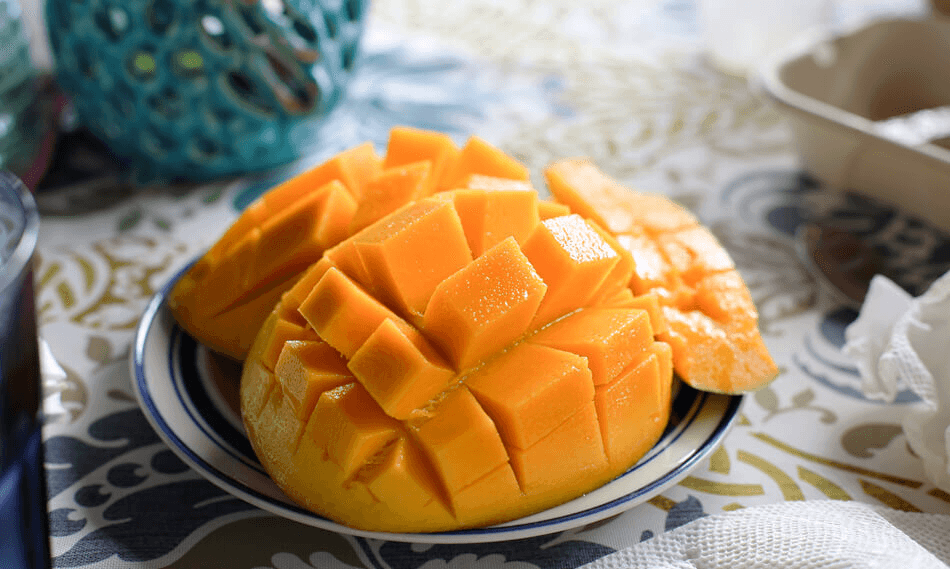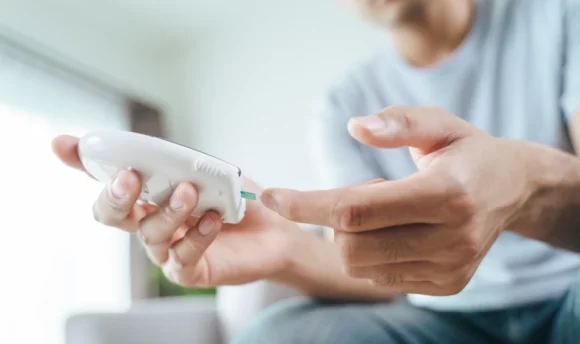Is Mango Good for Diabetes? Glycemic Index and Sugar Content
As a fruit containing fructose, a type of natural sugar that is found in fruit, you may wonder if you can eat mangoes when you have diabetes.

Mango is a popular tropical fruit with its classic orange flesh and zingy sweet taste. However, as a fruit, it contains sugar that many with diabetes may worry about.
So, is mango acceptable to eat when you have diabetes? Does it even have any benefits for people with diabetes?
Read on to learn more about mango and diabetes!
Is Mango Good for Diabetes?
Mango is good for diabetes and even has many potential health benefits.
Many individuals with diabetes encounter a dilemma regarding wanting to eat healthy fruit, such as mango, but feeling like they should not. There is a common misconception that diabetes patients should avoid delicious fruit out of fear of it increasing their blood sugars.
Therefore, people with diabetes can safely and healthfully eat mangoes as long as it is in moderation and in appropriate serving sizes.
Overall, mango provides beneficial fiber, antioxidants, vitamins, and minerals that are helpful to all individuals, including those with diabetes.
Mango Sugar Content
According to the U.S. Department of Agriculture FoodCentral Database, a one-cup serving (approximately 165 grams by weight) of mango contains approximately 22 grams of sugar.
To reduce the sugar content in your mango, avoid any mango sources that have added sugar, such as canned fruit in syrup, dried mango with sugar, sugar-sweetened mango juice, and mango candies.
However, naturally fresh, frozen, or canned mango without added sweetener is a nutritious choice, even for those with diabetes.
Additionally, dried mango is a good choice; however, it is often sweetened, so it is extra important to check the packaging for the nutrition facts label and read the ingredient list.
In terms of serving size, for fruit in general, a serving is a small piece of whole fruit, one cup of cut-up fruit, and a 1/2 cup of dried fruit.
Mango Glycemic Index
Now, let’s shift gears and discuss the importance of glycemic index measurements.
According to the Academy of Nutrition and Dietetics EatRight, the glycemic index measures how much and how quickly a food causes blood glucose levels to spike or rise.
Foods may have a low glycemic index if they contain significant amounts of fiber, protein, or fat.
Fiber, protein, and fat slow down the digestion and absorption of sugar in the foods we eat and therefore resist drastic changes in blood sugars, even after you have consumed something with sugar, such as a piece of fruit.
More specifically, fruits such as mango have a lower glycemic index because of their fiber content.
Mango has a recognized glycemic index value of 55 or 56, classifying it as having a low GI. However, it is bordering on moderate.
When you have diabetes, eat mangoes in moderation and focus more on lower GI fruits, such as apples and oranges.
Does Mango Raise Blood Sugar Levels?
Since mango contains sugar in the form of fructose, it does raise blood glucose levels. Everything with carbohydrates, which includes grains, starches, fruits, and dairy, will raise blood sugar levels.
However, it is essential to note how sugar is digested and absorbed also matters. Since mango has a glycemic index of 55, it will raise the blood sugar slowly and will not cause drastic spikes.
5 Health Benefits of Mango for Diabetes
Now let’s discuss five health benefits of eating mango when you have diabetes.
#1 Good source of fiber
A one-cup serving of mango contains 2.6 grams of dietary fiber. Fiber is essential to a healthy and balanced diet as it helps maintain a healthy gastrointestinal tract and digestive system and can even lower blood sugar levels.
The Mayo Clinic recommends that women and men aged 50 and younger consume 21 and 30 grams, respectively, while women and men aged 51 and older consume 25 and 38 grams of fiber, respectively.
#2 High in antioxidants
Mango contains many vitamins and minerals, including vitamin c. Vitamin C supports healthy immune system functioning and wound healing. A one-cup serving of mango contains 60 milligrams of vitamin C.
Additionally, vitamin C is an antioxidant that helps protect cells from damage from harmful compounds called free radicals. Free radicals are naturally produced in the body by processes such as metabolism.
Balance of antioxidants in the diet and free radicals in the body can help reduce overall oxidative stress, which plays a role in diabetes, along with other conditions such as high blood pressure.
#3 Rich in mangiferin
Mangiferin is a unique antioxidant that is found primarily in mango plants.
According to Molecular Medicine Reports, mangiferin has antioxidant properties and has been shown to improve blood glucose levels and hemoglobin A1C levels in a mice study.
Additionally, this study found that in mice fed a high fructose diet, the sugar found in fruit and the mangiferin helped to reduce insulin resistance.
Insulin resistance is when the cells do not respond to insulin as they should; therefore, the sugar stays and builds up in the blood, causing high blood sugar.
#4 Contains quercetin
Like mangiferin, quercetin is a polyphenol when you eat mango, amongst many other fruits and vegetables.
According to Critical Reviews in Food Science and Nutrition, quercetin has been shown to improve blood sugar levels and reduce insulin resistance.
When you eat mango and other fruits and vegetables, you will ensure you are getting a wide variety of nutrients, antioxidants, vitamins, minerals, and more.
Another polyphenol found in mangoes is vitamin A or carotene.
Vitamin A is an essential vitamin that functions to support healthy eye health and vision. Other sources of vitamin A include carrots and sweet potatoes.
According to the International Journal of Environmental Research and Public Health, the beta-carotene content in mangoes can also aid in the prevention of leukemia and the progression of other types of cancers.
#5 Low in fat and calories
Many individuals who have diabetes also struggle with weight. Mango is a fruit low in calories and fat with only 99 calories and less than one gram of fat.
Yet, the fiber and water content make it filling and satisfying to eat.
According to the International Journal of Environmental Research and Public Health, 75–85% of the pulp of the mango is water.
Eat mango with lean protein and healthy fat like almonds to create a more satiating snack.
Additionally, adding healthy fat and protein when you eat mango will also help control blood sugar and prevent spikes.
A Word From a Dietitian
While the nutritional composition of mangoes varies greatly based on how it was produced, the region it was grown in, and its maturity, it is typically a carbohydrate-rich fruit full of vitamins and minerals.
However, any type of fruit, including mango, can be a great choice to get vitamins, minerals, and fiber, even if you have diabetes.
Mango has a low glycemic index, so it will not raise blood sugar levels quickly. In addition, it contains fiber that slows down the digestion of the sugars and increases feelings of fullness and satisfaction.
Eat mango with protein and healthy fat such as almonds or another type of nut or seed.
Keep the serving size to a small piece of whole fruit or one cup of cut-up fruit. This serving size contains approximately 15 grams of carbohydrates.
Count the fruit as one carbohydrate to help monitor your blood sugar.
Conclusion
Mango is good for diabetes as it is rich in fiber, antioxidants, phytochemicals, and more.
Mango has a low glycemic index, meaning it does not cause drastic spikes in blood sugar levels. The fiber in the mango causes slower digestion and absorption of sugars, leading to this slow rise in blood sugar.
The antioxidants in mango help to protect against damage from free radicals that can cause oxidative stress, which plays a role in diabetes.
Additionally, mango is very low in calories and fat and therefore can contribute to weight loss.

















































 Select your language:
Select your language: 








